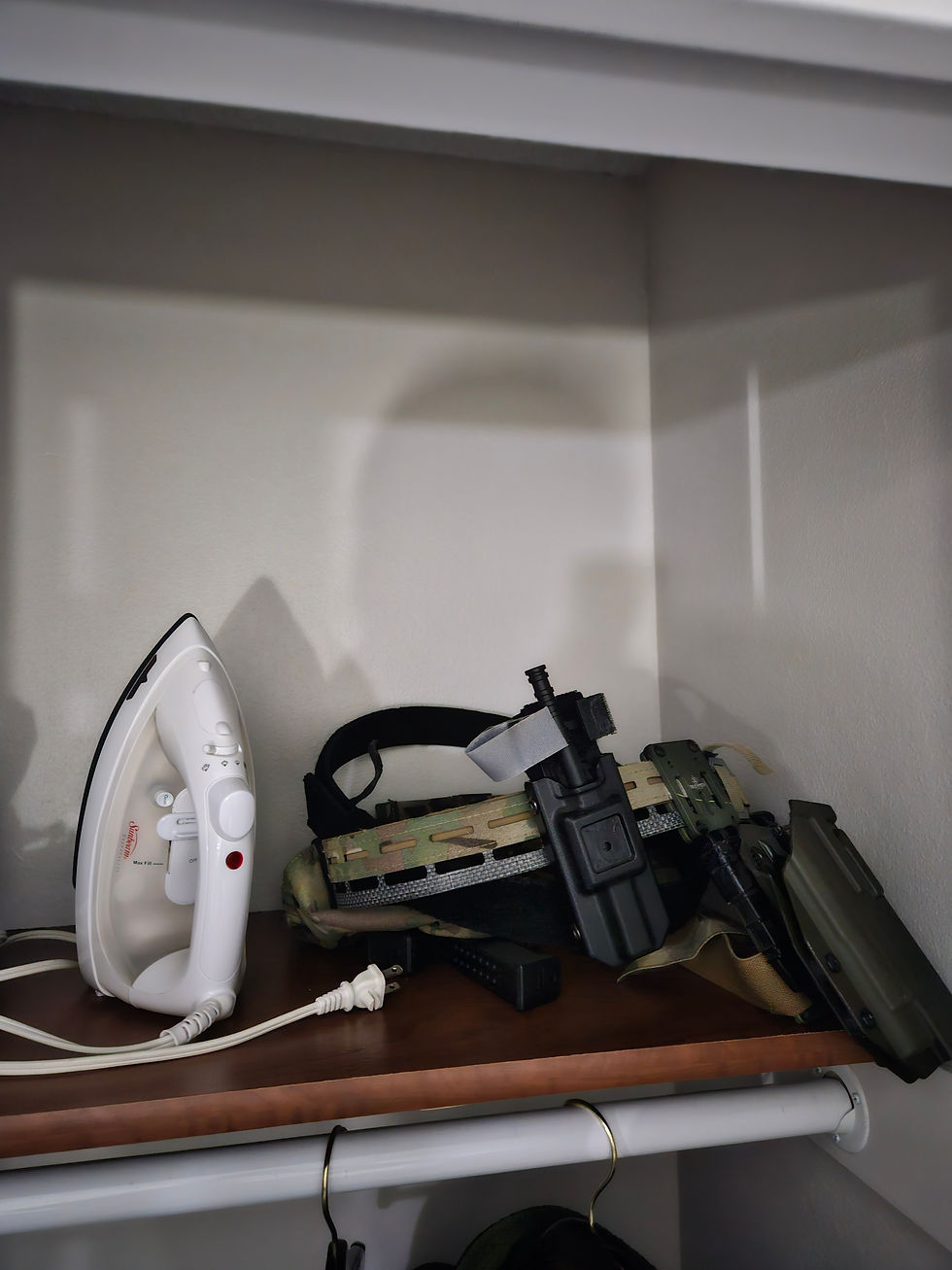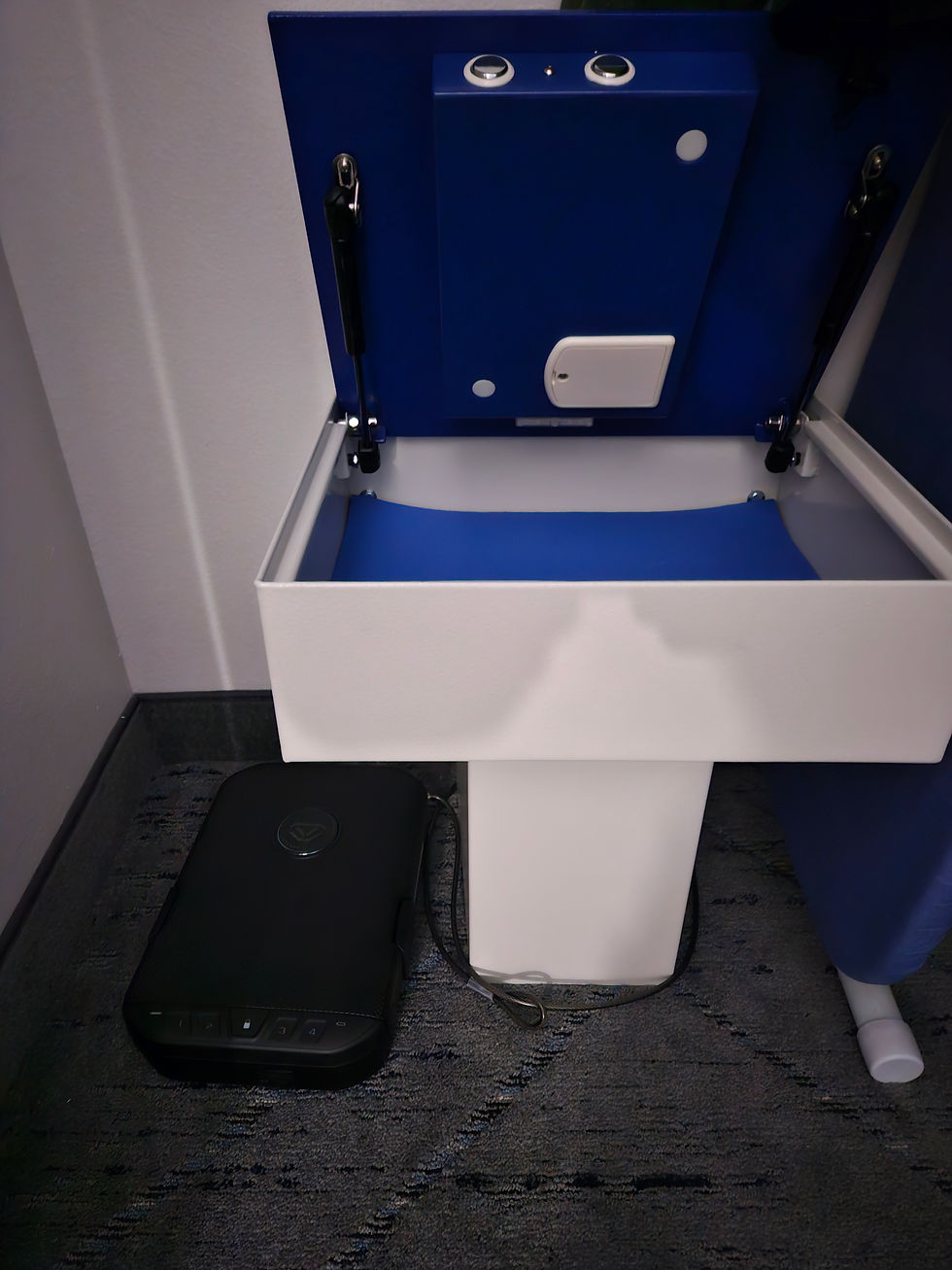Flying with firearms and keeping your skills up on the road
- Rowan
- Jan 8
- 4 min read
Staying on Track: Tips for Maintaining Firearms Proficiency While Traveling
Anyone who does a lot of traveling knows it can be hard to keep up with your normal routines while navigating airports and staying at hotels. Recently, I found myself working several weeks at a time out of state, and managing training, fitness, diet, and sleep has been a challenge. Here are some tips to keep up with your training and firearms proficiency while traveling.
Plan Accordingly
For this trip, I knew I wanted to get some dry-fire practice in. Since my job required me to fly with a firearm, I figured, why not also bring my competition/range gun and my range belt? I had some spare room in my bag and managed to fit both my CCW and range gun in my new travel safe (a Lifepod 2.0). Now I can do all my dry-fire drills with the same gear I use at home.
Flying with Firearms
You might think flying with a gun is a big deal, but in my experience, it has been relatively hassle-free. The process generally goes like this: unload your firearm and place it in a lockable case. The case doesn’t have to be fancy or expensive; generally, the hard case your gun came with will suit the TSA just fine, as long as it can be locked with a padlock or chains and isn’t easily pried open. I also put a couple of loaded magazines in the case along with other items like pocket knives. Quick tip: don’t pack your gun case somewhere buried in your suitcase—I’ll explain why in a second.
When you get to the airport, go through the check-in line for agent assistance and tell them you have a firearm to declare. They might give you an odd look, like you just said you had an ostrich in your shoe, and then ask to see the case. This is why you don’t want to be unloading everything in your bag in front of the entire check-in line. They’ll check that it’s closed and locked and ask if it’s unloaded. You’ll then sign a little piece of paper affirming you pinky-promise it’s unloaded.
Afterward, your bag either disappears down the conveyor belt or, at some airports, the agent will bring you to a back room where some bored-looking TSA agents will either physically inspect your gun or run it through an X-ray. Quick note: at some airports, your bag will end up at the baggage service desk, not on the carousel with the rest of the luggage—good to know!

I always arrive extra early to ensure I have enough time to complete check-in before my flight. One critical thing to know is the firearm laws in the state you’re flying into or passing through during a layover. For example, I’m not entirely sure what TSA would do if you flew into California with 15-round mags or a “scary-looking” AR, but I imagine the range of outcomes is somewhere between:
A: They don’t notice at all (they all look the same anyway).
B: “This is my time to shine!”—and they call the Feds about your "murderous assault magazine."
If you encounter option B, it’s probably going to be a very long day. Plan accordingly!
Firearm Safety in a Hotel
Obviously, all standard safety precautions for dry fire are in play, but in a hotel, you’d better double and triple-check that your gun is unloaded and there’s no ammo around. Unlike at home, there are likely people in all directions—including above and below you. Be hyper-aware of where you’re pointing your firearm and consider where an unintended (not that we’ll have one!) bullet would go.

Firearm Storage
This part is tricky. Ideally, you’re in a place where you can carry, and your firearm can stay on you. I don’t trust leaving my firearm in its case in my bag, as anyone could simply take the case and open it later. Also, I don’t trust hotel safes; hotel staff can open them at will, as people often forget their codes or leave safes locked.
I’ll review the Lifepod case I just got at some point, but I like that it has a steel cable I can use to secure it to the pedestal the safe is mounted to. Yes, someone could cut the cable with bolt cutters, but it takes more work than just entering a code. This is also a good reason to be inconspicuous when you travel. If you show up with a giant Pelican case covered in high-end optic and firearm stickers, you’re basically announcing, “Hey, I have a bunch of really expensive firearms in my room.”

Establish Your Routine
For me, that meant hitting Trader Joe’s and picking up familiar food so I could manage my meals without getting stuck eating out or microwaving frozen dinners all week. My hotel room only has a mini-fridge and a microwave, so cooking is pretty much out of the question.
I usually sleep well in hotels, but I always bring a sleep mask and earplugs just in case. For example, the hotel next to ours has major construction going on. The night-shift workers have a tough time sleeping through all the jackhammering and sawing.
As for fitness, I didn’t want to spend two weeks being sedentary. The hotel gym was pitiful, so I found a local gym offering a two-week pass. In hindsight, I probably should have gone to Planet Fitness since they’re super cheap, but whatever works! Now I can get real workouts in, eat right, sleep well, and keep up on my skills instead of spending two weeks getting slow and stupid.
With a little planning and preparation, travel doesn’t have to throw you off track.




Comments